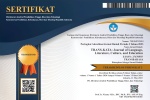An Analysis of Taboo Words in Megan Thee Stallion Songs
DOI:
https://doi.org/10.54923/jllce.v3i2.2Keywords:
Sociolinguistics, taboo words, Megan Thee Stallion, songAbstract
Taboo words is forbidden to talk about is connected or dealing of something that must be avoided. Taboo words are also used in the media especially a song. Some songs contain taboo words in their lyrics. Studying taboo words in song lyrics is crucial because it prevents misuse and misinterpretation, ensuring a more accurate understanding of the intended message and artistic expression. It also reveals the moral and cultural values reflected in the lyrics, exposing the societal norms and boundaries that may be challenged or reinforced. This qualitative research addressed the types of taboo words in Megan Thee Stallion songs. The data was analyzed based on Battistella (2005) about the types of taboo words. The researcher uses songs in “Fever” album as the object of the research. The researcher discovered about 21 taboo words in the eight songs on the fever album. The first type is characterized by epithets (6), profanity (2), vulgarity (6), and obscenity (7). According the data, obscenity was the most commonly used type of taboo words in song lyrics. It because there are many expressions involving sex-distinguish anatomy or sexual and excretory functions that is usually spoken harshly. While the research specifically examines Megan Thee Stallion's work, the findings may have broader implications for understanding taboo word usage in songs within the genre. By being aware of and responsibly engaging with taboo words in daily conversations and song lyrics, readers and song lovers can foster a respectful and considerate communication environment. This researcher hoped that readers and song lovers would avoid misusing taboo words that may appear in daily conversations and song lyrics.
Downloads
References
Allan, K. & Burridge, K. (2006). Forbidden words: Taboo and the censoring of language. New York: Cambridge University Press.
Battistella, E. L. (2005). Bad Language: Are Some Words Better than Others? New York: Oxford University Press.
Djafar, M. (2020). Taboo Words in Movie "Miracle at St. Anna" by Spike Lee (Unpublished Undergarduate thesis). State University of Gorontalo.
Esterika, T. (2016). An Analysis of swearwords that are used by white and black characters in 12 years a slave movie (Unpublished doctoral dissertation). Universitas Sanata Dharma Yogyakarta.
Fairman, M. C. (2009). Fuck: Taboo and protecting our First Amendment Liberties. Illinois: Sphinx Publishing.
Fakuade, G., Kemdirim, N., Nnaji, I., & Nwosu, F. (2013). Linguistic Taboos In The Igbo Society: A Sociolinguistic Investigation. Journal of Language, Discourse & Society, 2(2), 117-132
Feldman, G., Lian, H., Kosinski, M., & Stillwell, D. (2017). Frankly, We Do Give a Damn: The Relationship Between Profanity and Honesty. Social Psychological and Personality Science, 8(7), 816–826. doi: 10.1177/1948550616681055
Freitas, E. S. L. (2008). Taboo in Advertising. Amsterdam: John Benjamins Publishing Company.
Gao, C. (2013). A Sociolinguistic study of English Taboo Language. Theory and Practice in Language Studies, 3(12), 2310-2314.
Goodwin, C., & Heritage, J. (1990). Conversation Analysis. Annualy Review of Anthropology, 19, 283-307. doi: 10.1146/annurev.an.19.100190.001435
Holmes, J. (2013). An Introduction to Sociolinguistics (4th ed.). England: Routledge. doi: 10.4324/9781315833057
Jing-Schmidt, Z. (2019). Cursing, Taboo, and Euphemism. In J. A. Smith (Ed.), Routledge Handbook of Chinese Applied Linguistics (pp. 391-406). New York: Routledge.
Khan, W. A. (2021). Your Language, Your Identity: The Impact of Cultural Identity in Teaching English as A Foreign Language. International Journal of English Language Teaching, 5(4), 109-119. doi: 10.46827/ejel.v5i4.3249
Kieran, M. (2002). On Obscenity: The Thrill and Repulsion of the Morally Prohibited. Philosophy and Phenomenological Research, 64(1), 31–55.
Mental Health America. (2023). Black and African American Communities and Mental Health. Retrieved from https://www.mhanational.org/issues/black-and-african-american-communities-and-mental-health
Mishra, G. (2022). The Relationship between Language and Ethnicity. Journal of Contemporary Issues in Business and Government, 28(04), 1622-1625.
Prayuda, P. E., Suarnajaya, I. W., & Juniarta, P. A. K. (2020). The Analysis of Swear Words Used by the Characters in Moonlight. International Journal of Language and Literature, 3(4), 138–146. doi: 10.23887/ijll.v3i4.28414
Sa’d, S. S. T. (2017). A sociolinguistic analysis of taboos and euphemisms in an Arab community in Iran. Dialectologia, 18, 107-127. doi: 10.1344/dialectologia2016.18.6
Sapir, E. (1921). Language: An Introduction to the Study of Speech. New York: Harcourt, Brace, and Company.
Wardhaugh, R. (2006). An Introduction to Sociolinguistics (5th ed.). Oxford: Blackwell Publishing.
Downloads
Published
How to Cite
Issue
Section
License
Copyright (c) 2023 The Author(s)

This work is licensed under a Creative Commons Attribution-ShareAlike 4.0 International License.





